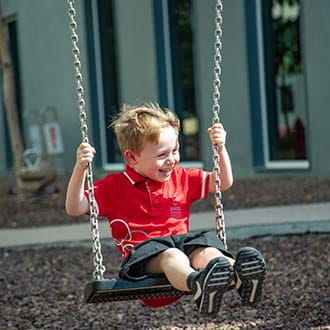We use cookies to improve your online experiences. To learn more and choose your cookies options, please refer to our cookie policy.

At SISD, health, wellness, and keeping children active during times of the year when they aren’t in school are important. Among other benefits, physical activity gives kids energy, reduces their body fat and chances of developing diabetes, and builds bone, joint and muscle strength. When children spend more time than usual inside, they may express more mood swings and are more likely to argue with others. As certain classes enter another period of remote learning, parents have a role in reminding children to stay active while they spend a lot of time on screens. In this blog, we discuss 5 ways you can help keep your children active while they are distance learning.
Getting adequate sleep is crucial for everyone in the family. If you don’t already have a routine, create one that involves winding down before bed: dressing out of clothes, brushing teeth, shutting off lights, and so on. Thirty minutes of exercise each day is all everyone needs to keep their energy up to focus on work or school at home. Children ages three to five will need more activity throughout the day than older children. Incorporating exercise into your morning routine can ensure everyone’s staying active, not only the kids. It can include riding bikes, dancing, or online family fitness classes. Write and put simple exercises into a jar like playing balloon volleyball, running up and down the stairs, 10 burpees, 20 jumping jacks, or holding a plank for 30 seconds. Select one activity a day for spontaneous moments of activity. Other exercise ideas include using rubber resistance bands, attaching a retractable net to your dining room table, or using fitness apps. Breaks are good for everyone who works or studies at home. Creating 15 or 30 minute “recesses” can provide a mental rest or time for doing more physical activity. Research has found access to green space for children, such as proximity to parks, can have long-lasting benefits into adulthood. Don’t be afraid to leave your home and get time in nature and under the sun. During evenings or weekends, building an obstacle course out of couch cushions or cardboard boxes, cooking, art or design projects, meditation or breathwork, and sports are great ways to change up the activities for the week.
If physical activity isn’t possible each day, try to incorporate it while your child is learning. For example, do squats or lift small one-pound weights at the desk (a can of beans works just as well!), shoot hoops or jump on the trampoline as they spell words, or turn colour or letter-learning into a scavenger hunt. On the other hand, younger children respond better to visual achievements, like stickers or stars on a chart after each day they complete their lessons.
Sadness and depression are common emotions for everyone in a pandemic. So, if your child wants to talk to their friends, let them. We at SISD know social development is as important as physical activity and academic success. Encourage your child to share their feelings with family members or friends if they need to. For older kids, playing games online may be a part of how they connect with others. Thus, allow them flexibility to structure their routines, build in their own exercise and breaks, and manage their screen time.